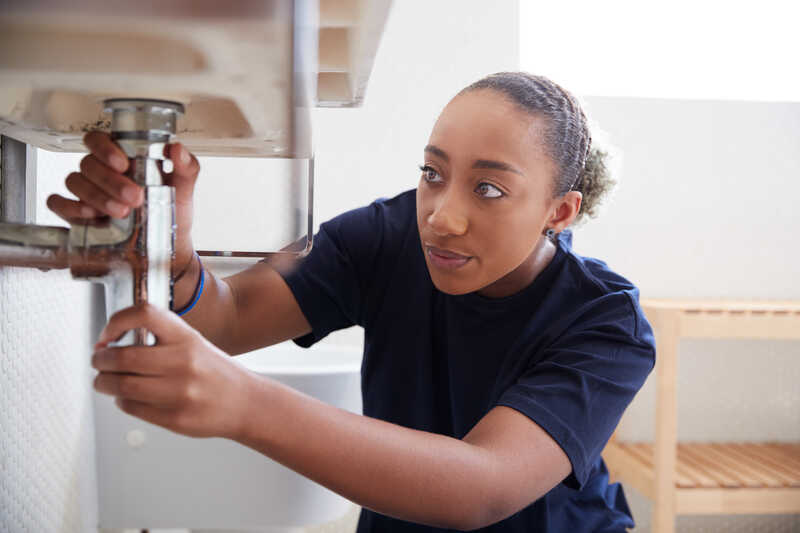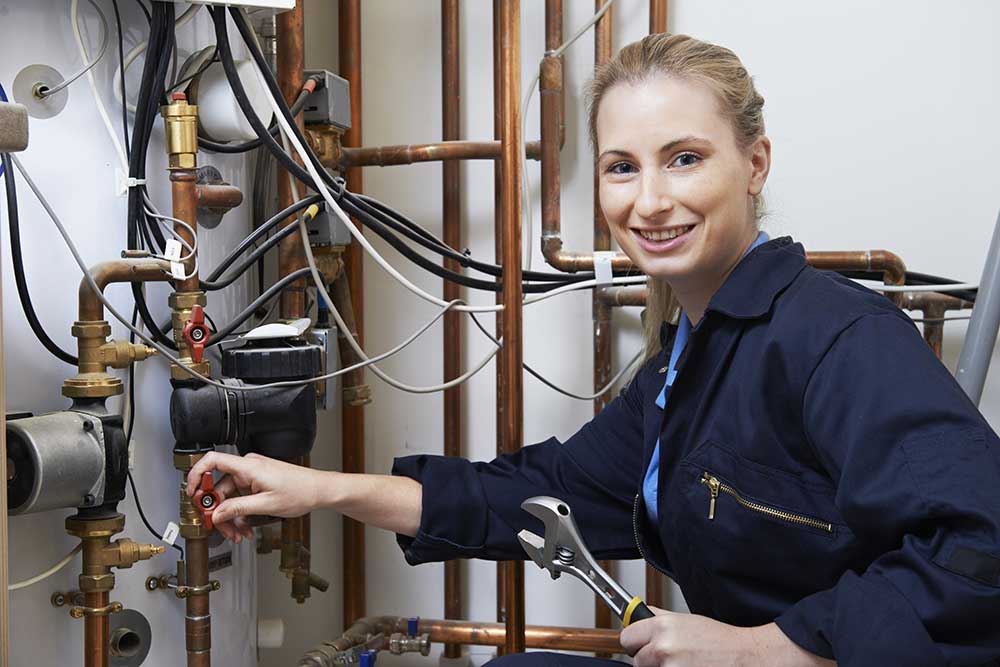The Silent Signs You Need Drain Services Immediately
The Silent Signs You Need Drain Services Immediately
Blog Article
Usual Plumbing Problems Every Home Owner Need To Know
Property owners often run into a variety of pipes issues that can interrupt day-to-day live. Typical troubles consist of leaking taps, clogged drains pipes, and running commodes. These issues usually come from worn-out parts or debris accumulation. In addition, reduced water pressure and ruptured pipelines can signify much deeper problems. Recognizing these obstacles is necessary for efficient maintenance. There are various other much less obvious worries that can emerge, which necessitate closer assessment.
Leaking Taps
Leaky taps can be a frustrating annoyance for property owners. These consistent trickles not only create an annoying audio however likewise bring about thrown away water and enhanced utility bills. A leaking faucet typically results from worn-out washers, O-rings, or seals, which weaken in time because of regular use and exposure to water. Sometimes, the tap's inner components may be corroded or harmed, demanding a much more extensive repair service or replacement. Determining the resource of the leakage is crucial; home owners might need to dismantle the tap to examine its components carefully. Routine upkeep can help protect against leaks, including cleansing aerators and looking for signs of wear. Resolving a dripping faucet quickly can conserve water and decrease expenses, making it a workable yet necessary job for homeowners to tackle in preserving their pipes systems successfully. Proper interest to this common problem can result in a much more comfy living setting.
Clogged Drains
Many home owners experience the irritation of stopped up drains eventually. This usual plumbing concern can occur from different reasons, including the accumulation of hair, soap residue, food fragments, and grease. These materials can produce blockages that prevent the circulation of water, causing slow water drainage or total stoppage.In kitchens, grease and food scraps are usually the wrongdoers, while washrooms regularly experience hair and soap buildup. Normal upkeep, such as utilizing drain strainers and staying clear of putting fats down the sink, can assist prevent clogs.When an obstruction does take place, house owners may try to use a bettor or a commercial drainpipe cleaner as initial treatments. Relentless issues may require professional help to stay clear of damages to pipelines. Understanding the causes and avoidance methods for clogged up drains can save property owners money and time, guaranteeing a smoother pipes experience

Running Commodes
Running toilets are an usual issue that can stem from various causes, including malfunctioning flappers and chain issues. The continuous running not just drainages yet additionally results in increased utility costs. Attending to these issues quickly can recover and stop further difficulties effectiveness to the plumbing system.
Reasons For Running Bathrooms
A consistent flow of water from a toilet can be both frustrating and wasteful, typically signifying underlying problems within the pipes system. One common cause is a used flapper shutoff, which might not produce an appropriate seal, permitting water to continually leak right into the bowl. Furthermore, a malfunctioning fill shutoff can cause too much water circulation, adding to the trouble. Misaligned float devices might also trigger the bathroom to run as they stop working to regulate the water degree suitably. One more potential concern is mineral build-up, which can obstruct components and impede their performance. Identifying these reasons promptly can help house owners attend to the problem before it rises, making sure efficient operation of their pipes system.
Effects of Constant Operating
Although typically neglected, the effects of a continually running commode can significantly impact both water use and home costs. A running bathroom can lose approximately 200 gallons of water daily, leading to increased water bills and unneeded source consumption. This extreme water usage not just strains the house spending plan however additionally adds to ecological problems, especially in areas encountering water scarcities. In addition, the consistent noise of running water can be a source of annoyance, interfering with the peace of the home - Plumbing. In addition, long term problems might result in more significant pipes problems if left unaddressed, resulting in further economic worries. House owners ought to recognize the relevance of timely repairs to reduce these adverse impacts and maintain a reliable plumbing system
Taking Care Of Running Commode Issues
Bathrooms that continuously run can be an irritating concern for home owners, yet identifying the cause is the very first step toward an effective repair. Common reasons consist of a defective flapper, which might not create an appropriate seal, allowing water to get away into the dish. If needed, home owners ought to inspect the flapper for wear and replace it. Additionally, the fill shutoff could be malfunctioning, causing excess water to flow continuously. Adjusting or replacing this component may resolve the concern. One more prospective offender is a misaligned float, which can be gotten used to the right elevation. Regular upkeep and timely repairs can stop running bathrooms, making certain both water conservation and cost savings on energy expenses.
Reduced Water Pressure
Low tide stress can be a frustrating experience for property owners, often showing up as a weak stream from showerheads and faucets. This problem can come from different causes, including sediment build-up in pipes, corroded plumbing, or issues with the municipal water system. Property owners may initially discover low tide stress in certain locations of the home, however it can rise to a much more prevalent trouble otherwise attended to promptly.In some instances, malfunctioning pressure regulators can additionally be accountable for inadequate water circulation. Routine maintenance, such as purging the hot water heater and inspecting for blockages, can assist mitigate these issues. It may be essential to consult a professional plumbing to Web Site detect and resolve the underlying cause if low water pressure lingers. Identifying the resource of low tide pressure is vital for recovering correct water circulation and guaranteeing a useful pipes system.
Burst Water lines
Burst pipes can be a significant pipes problem, usually arising from the very same factors that contribute to reduced water pressure, such as temperature fluctuations and aging framework. When water freezes within pipelines, it expands, increasing pressure up until the pipeline can no more include it, resulting in a tear. In addition, rust from prolonged direct exposure to water can deteriorate pipes, making them susceptible to bursting under typical pressure.Homeowners may discover signs of a burst pipe through unexpected water leakages, wet spots on wall surfaces or ceilings, and an unexpected boost in their water bill. Immediate activity is vital; stopping working to address a ruptured pipe can result in considerable water damage, mold growth, and pricey repairs. Regular examinations and upkeep of plumbing systems can help avoid this concern. In addition, protecting pipelines in colder locations and replacing old piping can greatly lower the danger of ruptured continue reading this pipes, safeguarding the home's plumbing stability.
Hot Water Heater Issues
Exactly how can house owners recognize hot water heater concerns prior to they intensify? Routine assessment and upkeep can assist find prospective issues early. House owners ought to search for indicators such as inconsistent water temperature level, unusual sounds, or a reduction in warm water supply. Leaks or pools around the device may show a malfunction that calls for immediate interest. The look of rust or debris build-up can additionally signal the demand for maintenance.Additionally, homeowners need to monitor the age of their water heater; most units have a life-span of 8 to 12 years. It may be time to reflect on substitute if the heating unit is approaching this age and showing signs of wear. Regular flushing of the storage tank can this post prevent sediment buildup, lengthening the device's life. By continuing to be cautious and addressing issues quickly, homeowners can avoid pricey fixings and ensure their hot water heater operates successfully for several years ahead.
Drain Line Issues
Many property owners might come across sewage system line issues eventually, affecting their plumbing system's general capability. Common concerns include obstructions, tree origin intrusions, and pipeline damage. Obstructions usually result from the buildup of grease, hair, and foreign things that obstruct the flow of wastewater. Tree roots can infiltrate sewer lines, causing leakages and splits. In addition, maturing pipelines may break or rust, bring about further issues (Plumbing). Signs of sewer line trouble include slow-moving drains pipes, undesirable smells, and sewage backups, which can present health threats. Property owners should deal with these problems immediately to prevent considerable damage and expensive repair services. Regular maintenance, such as set up assessments and cleansing, can help prevent substantial issues. In severe cases, specialist intervention may be essential to repair or change damaged areas of the sewage system line. Recognizing these potential problems can help homeowners take positive actions to keep their pipes systems effectively
Frequently Asked Questions
Exactly How Can I Avoid Pipes Issues in My Home?
To stop plumbing troubles, normal maintenance is crucial. Property owners should check pipes for leakages, clean drains pipes, and display water stress. Furthermore, educating themselves concerning proper usage can substantially lower the danger of future pipes issues.
When Should I Call a Plumber Rather of Repairing It Myself?
Establishing when to call a plumbing usually depends upon the seriousness of the issue. Substantial leaks, consistent blockages, or strange troubles call for expert support, guaranteeing safety and preventing additional damages instead of risking individual efforts at repair.
What Are the Indicators of Hidden Plumbing Leaks?
Signs of hidden pipes leaks include unusual water expenses, damp spots on walls or ceilings, mold and mildew development, and a musty odor. These indicators usually recommend underlying concerns that require specialist assessment and repair service for resolution.
How Often Should I Have My Plumbing Inspected?
Normal pipes inspections are advised each to 2 years. This frequency assists recognize prospective concerns early, making sure the system continues to be efficient and minimizing the threat of costly repairs or unanticipated emergencies in the future.
Exist DIY Solutions for Minor Pipes Issues?

Report this page